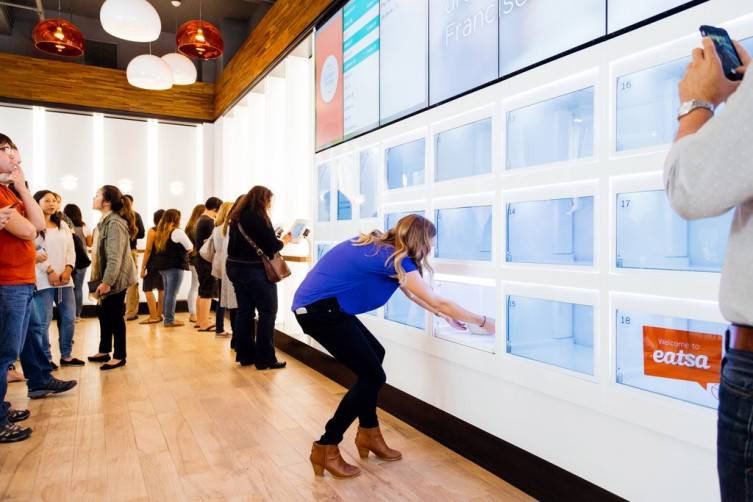Meet SF’s Eatsa: The World’s First Robo-Restaurant
We are the United States of Automation. Never before have so many daily practices been replaced by machines. We’ve become accustomed to self-service checkouts and grocery delivery services, but are we ready for a robo-restaurant?

San Francisco’s newest quinoa spot Eatsa is the first restaurant in the USA where you don’t have to interact with any human being in order to get your meal. Not one word has to be spoken. So how exactly does a no-staff restaurant function?
Picture this. First you might wait a few minutes in a fast-moving line where you can browse menu options on a flat-screen. The menu consists of eight varieties of quinoa bowls that will each run you a shockingly low $6.95. You will find options like a bento bowl, burrito bowl and balsamic beet. Once you’ve made your decision, you approach an Ipad where you will select your order. In the blink of an eye your name, taken from you credit card, will appear on another screen. When your food is ready a number pops up next to it. This number corresponds to a cubby where your food magically appears.eats
David Friedberg, software entrepreneur and Eatsa founder told the NY Times, “I would call it different than a restaurant, it’s more like a food delivery system.”
While Eatsa currently does have staff making their quinoa bowls, they have plans automate this process as well. While there have been contradicting views on whether this is simply robbing people of jobs or provides a more efficient option, it is surely representative of what is to come. Cutting the cost of labor surely will save Freidberg a lot of cash, when commenting on the subject he noted “The objective is over time we want to automate more and more to increase speed and reduce cost, so we create a food product that’s much cheaper and also happens to be healthy.” It should come as no surprise that other culinary services will want use the Eatsa process as a model to reduce their own costs.
The Eatsa founder has always been a healthy-eating advocate, particularly when it comes to quinoa. Quinoa “is a much more efficient way to deliver protein to people than animal protein,” he told the NY Times. Freidberg is hoping to alter consumers’ taste buds in a true attempt to change our constantly scrutinized agricultural systems.













